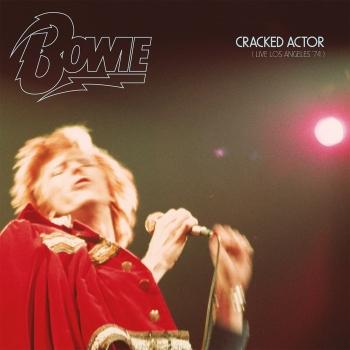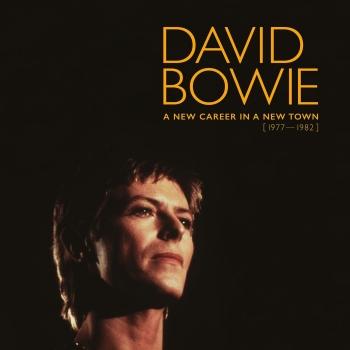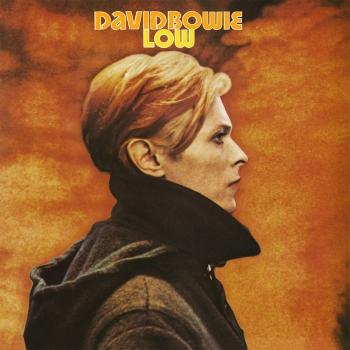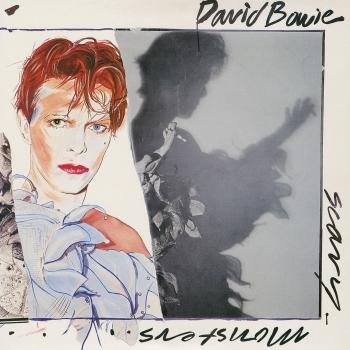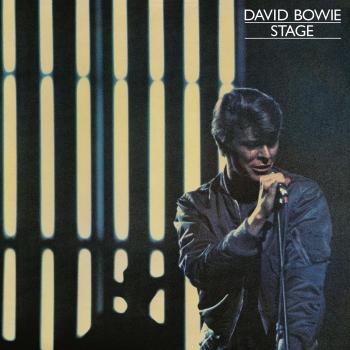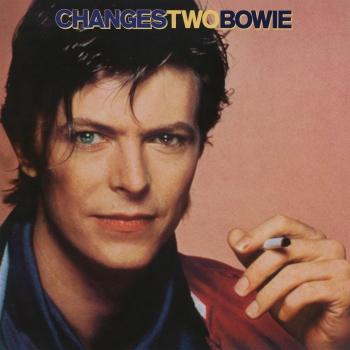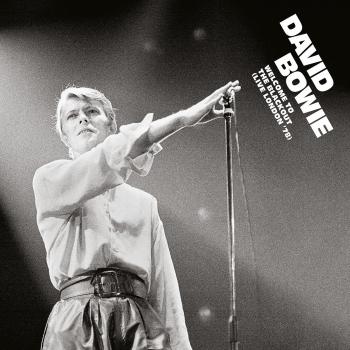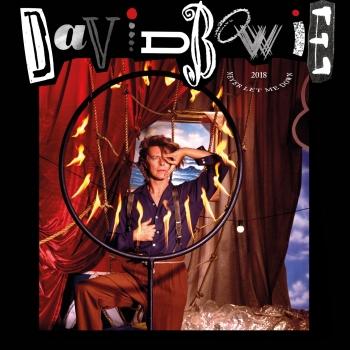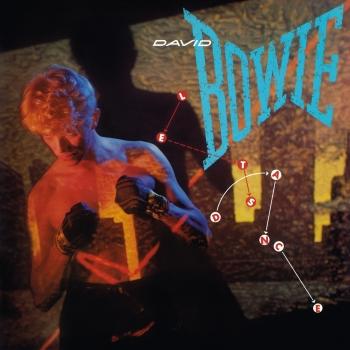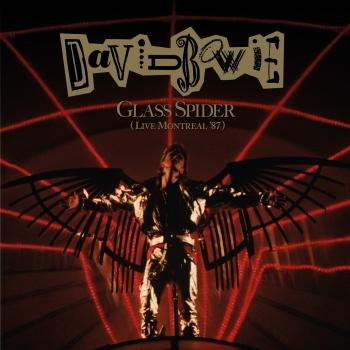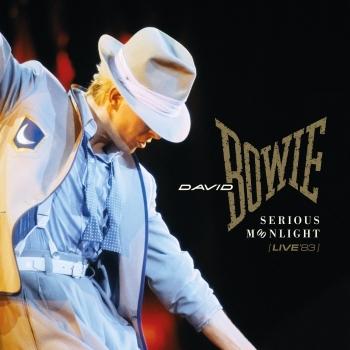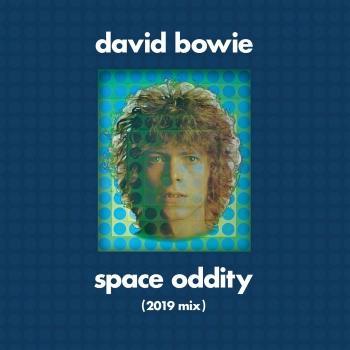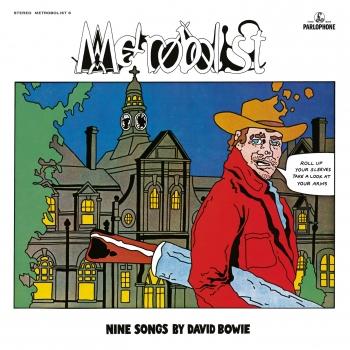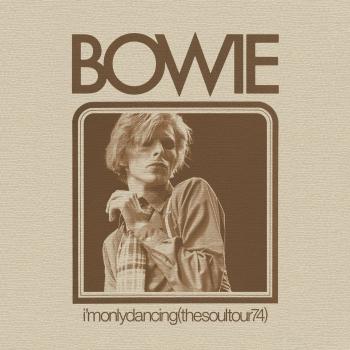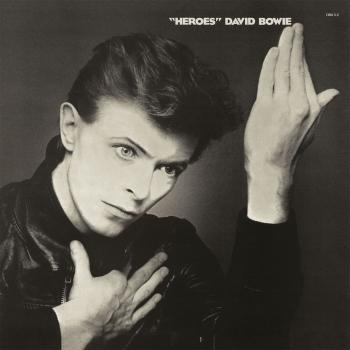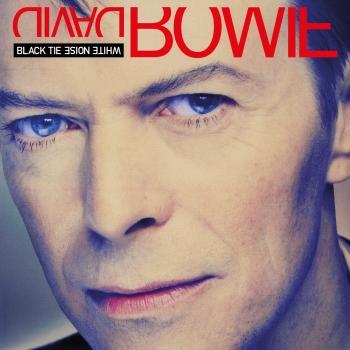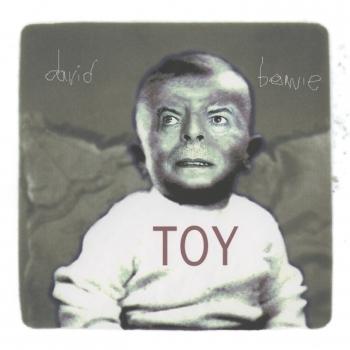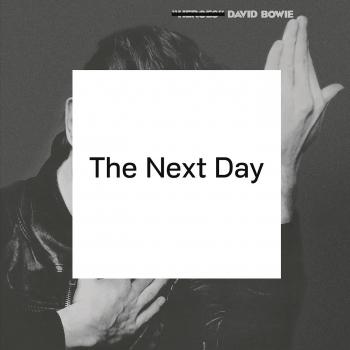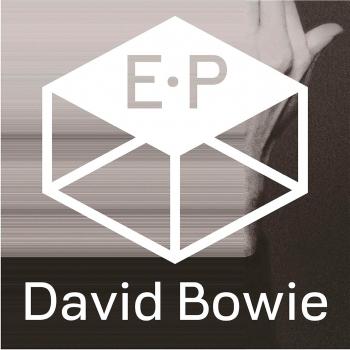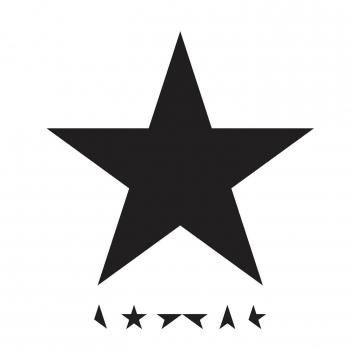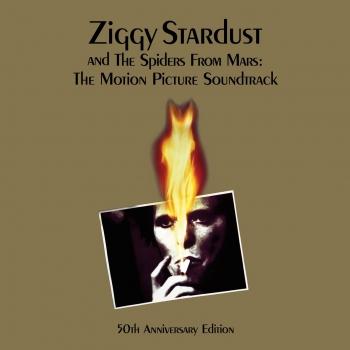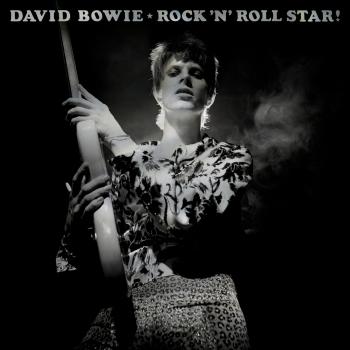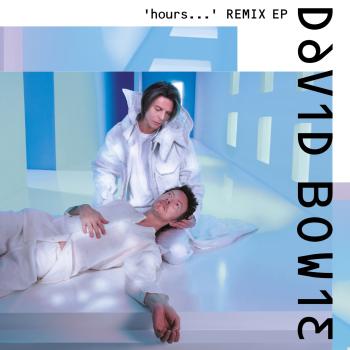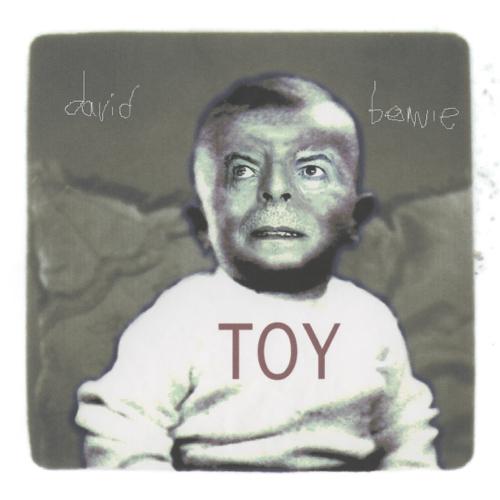
Toy (Toy:Box) David Bowie
Album info
Album-Release:
2022
HRA-Release:
07.01.2022
Album including Album cover
I`m sorry!
Dear HIGHRESAUDIO Visitor,
due to territorial constraints and also different releases dates in each country you currently can`t purchase this album. We are updating our release dates twice a week. So, please feel free to check from time-to-time, if the album is available for your country.
We suggest, that you bookmark the album and use our Short List function.
Thank you for your understanding and patience.
Yours sincerely, HIGHRESAUDIO
- 1 I Dig Everything 05:03
- 2 You've Got A Habit of Leaving 04:48
- 3 The London Boys 03:47
- 4 Karma Man 03:46
- 5 Conversation Piece 03:53
- 6 Shadow Man 04:40
- 7 Let Me Sleep Beside You 03:14
- 8 Hole In The Ground 03:32
- 9 Baby Loves That Way 04:37
- 10 Can't Help Thinking About Me 03:25
- 11 Silly Boy Blue 05:35
- 12 Toy (Your Turn To Drive) 04:16
- 13 Liza Jane (Alternative Mix) 04:46
- 14 You've Got A Habit of Leaving (Alternative Mix, 2021 Remaster 96kHz) 04:49
- 15 Baby Loves That Way (Alternative Mix, 2021 Remaster 96kHz) 04:43
- 16 Can't Help Thinking About Me (Alternative Mix 96kHz) 03:26
- 17 I Dig Everything (Alternative Mix 96kHz) 05:05
- 18 The London Boys (Alternative Version 96kHz) 03:48
- 19 Silly Boy Blue (Tibet Version 96kHz) 05:12
- 20 Let Me Sleep Beside You (Alternative Mix, 2021 Remaster 96kHz) 03:15
- 21 In The Heat Of The Morning (Alternative Mix) 03:53
- 22 Conversation Piece (Alternative Mix, 2021 Remaster 96kHz) 03:52
- 23 Hole In The Ground (Alternative Mix 96kHz) 03:54
- 24 Shadow Man (Alternative Mix, 2021 Remaster 96kHz) 04:50
- 25 Toy (Your Turn To Drive) (Alternative Mix, 2021 Remix 96kHz) 04:51
- 26 In The Heat Of The Morning (Unplugged & Somewhat Slightly Electric Mix) 03:52
- 27 I Dig Everything (Unplugged & Somewhat Slightly Electric Mix) 04:58
- 28 You've Got A Habit of Leaving (Unplugged & Somewhat Slightly Electric Mix) 03:44
- 29 The London Boys (Unplugged & Somewhat Slightly Electric Mix) 03:45
- 30 Karma Man (Unplugged & Somewhat Slightly Electric Mix) 03:43
- 31 Conversation Piece (Unplugged & Somewhat Slightly Electric Mix) 03:50
- 32 Shadow Man (Unplugged & Somewhat Slightly Electric Mix) 04:18
- 33 Let Me Sleep Beside You (Unplugged & Somewhat Slightly Electric Mix) 03:05
- 34 Hole In The Ground (Unplugged & Somewhat Slightly Electric Mix) 03:18
- 35 Baby Loves That Way (Unplugged & Somewhat Slightly Electric Mix) 04:34
- 36 Can't Help Thinking About Me (Unplugged & Somewhat Slightly Electric Mix) 03:30
- 37 Silly Boy Blue (Unplugged & Somewhat Slightly Electric Mix) 05:29
- 38 Toy (Your Turn To Drive) (Unplugged & Somewhat Slightly Electric Mix) 03:53
Info for Toy (Toy:Box)
TOY:Box is a special edition of the unreleased TOY album. The ‘capture the moment’ approach of the recording sessions are extended to the sleeve artwork designed by Bowie featuring a photo of him as a baby with a contemporary face. Toy is a posthumously released studio album by English musician David Bowie. It was recorded from July to October 2000 in New York City and featured re-recordings of songs Bowie recorded between 1964 and 1971, along with a couple of new tracks. The project was co-produced by Bowie and Mark Plati and featured musicians from Bowie's then-touring band—Plati, Earl Slick, Gail Ann Dorsey, Mike Garson and Sterling Campbell—with overdubs from Lisa Germano, Gerry Leonard and Cuong Vu.
Bowie's intention for the project was to rehearse the tracks, record them live and release them as quickly as possible, predating the idea of the "surprise album". Intended for release in March 2001, the album was shelved by EMI/Virgin due to financial struggles, leading Bowie to depart the label and begin work on his next album Heathen (2002). Various Toy tracks saw release as B-sides and bonus tracks in the ensuing years; two were remade for Heathen and two appeared on the Nothing Has Changed compilation in 2014.
TOY was recorded following David's Glastonbury 2000 performance. Bowie entered the studio with his band to record new interpretations of songs he’d first recorded from 1964-1971. The plan was to record the album ‘old school’ with the band playing live, choose the best takes and then release it as soon as humanly possible. Unfortunately, in 2001 the concept of the ‘surprise drop’ album release and the technology to support it were still quite a few years off, making it impossible to release TOY at the time.
Included in TOY:Box are alternative mixes and versions including proposed B-Sides (versions of David’s debut single ‘Liza Jane’ and 1967’s ‘In The Heat Of The Morning’), later mixes by Tony Visconti and the ‘Tibet Version’ of ‘Silly Boy Blue’ recorded at The Looking Glass Studio time at the of the 2001 Tibet House show in New York featuring Philip Glass on piano and Moby on guitar.
Featuring 'Unplugged & Somewhat Slightly Electric’ mixes of thirteen TOY tracks. Producer Mark Plati "While we were recording the basic tracks Earl Slick suggested that he and I overdub acoustic guitars on all the songs. He said this was a Keith Richards’ trick, sometimes these guitars would be a featured part of the track, and at other times they’d be more subliminal. Later while mixing, David heard one of the songs broken down to just vocals and acoustic guitars; this gave him the idea that we ought to do some stripped-down mixes like that and that maybe one day they'd be useful. Once we put a couple of other elements in the pot, it felt like it could be a completely different record. I was only too happy to finish that thought some two decades after the fact”.
David Bowie, vocals, keyboards, Stylophone, mandolin
Earl Slick, guitar
Gail Ann Dorsey, bass
Mike Garson, keyboards
Mark Plati, bass, guitar
Sterling Campbell, drums
Lisa Germano, acoustic and electric violin, recorder, mandolin, accordion
Gerry Leonard, guitar
Cuong Vu, trumpet
Holly Palmer, backing vocals
Emm Gryner, backing vocals
Tony Visconti, string arrangements
Produced by David Bowie, Mark Plati
Digitally remastered
Please Note: This album consists of different sampling rates. See track list - behind each track is the sampling rate. We offer this album in its native sampling rate of 48kHz, 24-bit. The provided 96kHz version was up-sampled and offers no audible value! Hence the reason why we don't offer the MQA!
David Bowie
The cliché about David Bowie says he's a musical chameleon, adapting himself according to fashion and trends. While such a criticism is too glib, there's no denying that Bowie demonstrated remarkable skill for perceiving musical trends at his peak in the '70s. After spending several years in the late '60s as a mod and as an all-around music-hall entertainer, Bowie reinvented himself as a hippie singer/songwriter. Prior to his breakthrough in 1972, he recorded a proto-metal record and a pop/rock album, eventually redefining glam rock with his ambiguously sexy Ziggy Stardust persona. Ziggy made Bowie an international star, yet he wasn't content to continue to churn out glitter rock. By the mid-'70s, he developed an effete, sophisticated version of Philly soul that he dubbed 'plastic soul,' which eventually morphed into the eerie avant-pop of 1976's Station to Station. Shortly afterward, he relocated to Berlin, where he recorded three experimental electronic albums with Brian Eno. At the dawn of the '80s, Bowie was still at the height of his powers, yet following his blockbuster dance-pop album Let's Dance in 1983, he slowly sank into mediocrity before salvaging his career in the early '90s. Even when he was out of fashion in the '80s and '90s, it was clear that Bowie was one of the most influential musicians in rock, for better and for worse. Each one of his phases in the '70s sparked a number of subgenres, including punk, new wave, goth rock, the new romantics, and electronica. Few rockers ever had such lasting impact.
David Jones began performing music when he was 13 years old, learning the saxophone while he was at Bromley Technical High School; another pivotal event happened at the school, when his left pupil became permanently dilated in a schoolyard fight. Following his graduation at 16, he worked as a commercial artist while playing saxophone in a number of mod bands, including the King Bees, the Manish Boys (which also featured Jimmy Page as a session man), and Davey Jones & the Lower Third. All three of those bands released singles, which were generally ignored, yet he continued performing, changing his name to David Bowie in 1966 after the Monkees' Davy Jones became an international star. Over the course of 1966, he released three mod singles on Pye Records, which were all ignored. The following year, he signed with Deram, releasing the music hall, Anthony Newley-styled David Bowie that year. Upon completing the record, he spent several weeks in a Scottish Buddhist monastery. Once he left the monastery, he studied with Lindsay Kemp's mime troupe, forming his own mime company, the Feathers, in 1969. The Feathers were short-lived, and he formed the experimental art group Beckenham Arts Lab in 1969.
Bowie needed to finance the Arts Lab, so he signed with Mercury Records that year and released Man of Words, Man of Music, a trippy singer/songwriter album featuring 'Space Oddity.' The song was released as a single and became a major hit in the U.K., convincing Bowie to concentrate on music. Hooking up with his old friend Marc Bolan, he began miming at some of Bolan's T. Rex concerts, eventually touring with Bolan, bassist/producer Tony Visconti, guitarist Mick Ronson, and drummer Cambridge as Hype. The band quickly fell apart, yet Bowie and Ronson remained close, working on the material that formed Bowie's next album, The Man Who Sold the World, as well as recruiting Michael 'Woody' Woodmansey as their drummer. Produced by Tony Visconti, who also played bass, The Man Who Sold the World was a heavy guitar rock album that failed to gain much attention. Bowie followed the album in late 1971 with the pop/rock Hunky Dory, an album that featured Ronson and keyboardist Rick Wakeman.
Following its release, Bowie began to develop his most famous incarnation, Ziggy Stardust: an androgynous, bisexual rock star from another planet. Before he unveiled Ziggy, Bowie claimed in a January 1972 interview with Melody Maker that he was gay, helping to stir interest in his forthcoming album. Taking cues from Bolan's stylish glam rock, Bowie dyed his hair orange and began wearing women's clothing. He began calling himself Ziggy Stardust, and his backing band -- Ronson, Woodmansey, and bassist Trevor Bolder -- were the Spiders from Mars. The Rise and Fall of Ziggy Stardust and the Spiders from Mars was released with much fanfare in England in late 1972. The album and its lavish, theatrical concerts became a sensation throughout England, and it helped him become the only glam rocker to carve out a niche in America. Ziggy Stardust became a word-of-mouth hit in the U.S., and the re-released 'Space Oddity' -- which was now also the title of the re-released Man of Words, Man of Music -- reached the American Top 20. Bowie quickly followed Ziggy with Aladdin Sane later in 1973. Not only did he record a new album that year, but he also produced Lou Reed's Transformer, the Stooges' Raw Power, and Mott the Hoople's comeback All the Young Dudes, for which he also wrote the title track.
Given the amount of work Bowie packed into 1972 and 1973, it wasn't surprising that his relentless schedule began to catch up with him. After recording the all-covers Pin-Ups with the Spiders from Mars, he unexpectedly announced the band's breakup, as well as his retirement from live performances, during the group's final show that year. He retreated from the spotlight to work on a musical adaptation of George Orwell's 1984, but once he was denied the rights to the novel, he transformed the work into Diamond Dogs. The album was released to generally poor reviews in 1974, yet it generated the hit single 'Rebel Rebel,' and he supported the album with an elaborate and expensive American tour. As the tour progressed, Bowie became fascinated with soul music, eventually redesigning the entire show to reflect his new 'plastic soul.' Hiring guitarist Carlos Alomar as the band's leader, Bowie refashioned his group into a Philly soul band and recostumed himself in sophisticated, stylish fashions. The change took fans by surprise, as did the double-album David Live, which featured material recorded on the 1974 tour.
Young Americans, released in 1975, was the culmination of Bowie's soul obsession, and it became his first major crossover hit, peaking in the American Top Ten and generating his first U.S. number one hit in 'Fame,' a song he co-wrote with John Lennon and Alomar. Bowie relocated to Los Angeles, where he earned his first movie role in Nicolas Roeg's The Man Who Fell to Earth (1976). While in L.A., he recorded Station to Station, which took the plastic soul of Young Americans into darker, avant-garde-tinged directions, yet was also a huge hit, generating the Top Ten single 'Golden Years.' The album inaugurated Bowie's persona of the elegant 'Thin White Duke,' and it reflected Bowie's growing cocaine-fueled paranoia. Soon, he decided Los Angeles was too boring and returned to England; shortly after arriving back in London, he gave the awaiting crowd a Nazi salute, a signal of his growing, drug-addled detachment from reality. The incident caused enormous controversy, and Bowie left the country to settle in Berlin, where he lived and worked with Brian Eno.
Once in Berlin, Bowie sobered up and began painting, as well as studying art. He also developed a fascination with German electronic music, which Eno helped him fulfill on their first album together, Low. Released early in 1977, Low was a startling mixture of electronics, pop, and avant-garde technique. While it was greeted with mixed reviews at the time, it proved to be one of the most influential albums of the late '70s, as did its follow-up, Heroes, which followed that year. Not only did Bowie record two solo albums in 1977, but he also helmed Iggy Pop's comeback records The Idiot and Lust for Life, and toured anonymously as Pop's keyboardist. He resumed his acting career in 1977, appearing in Just a Gigolo with Marlene Dietrich and Kim Novak, as well as narrating Eugene Ormandy's version of Peter and the Wolf. Bowie returned to the stage in 1978, launching an international tour that was captured on the double-album Stage. During 1979, Bowie and Eno recorded Lodger in New York, Switzerland, and Berlin, releasing the album at the end of the year. Lodger was supported with several innovative videos, as was 1980's Scary Monsters, and these videos -- 'DJ,' 'Fashion,' 'Ashes to Ashes' -- became staples on early MTV.
Scary Monsters was Bowie's last album for RCA, and it wrapped up his most innovative, productive period. Later in 1980, he performed the title role in stage production of The Elephant Man, including several shows on Broadway. Over the next two years, he took an extended break from recording, appearing in Christiane F (1981) and the vampire movie The Hunger (1982), returning to the studio only for his 1981 collaboration with Queen, 'Under Pressure,' and the theme for Paul Schrader's remake of Cat People. In 1983, he signed an expensive contract with EMI Records and released Let's Dance. Bowie had recruited Chic guitarist Nile Rodgers to produce the album, giving the record a sleek, funky foundation, and hired the unknown Stevie Ray Vaughan as lead guitarist. Let's Dance became his most successful record, thanks to stylish, innovative videos for 'Let's Dance' and 'China Girl,' which turned both songs into Top Ten hits. Bowie supported the record with the sold-out arena tour Serious Moonlight.
Greeted with massive success for the first time, Bowie wasn't quite sure how to react, and he eventually decided to replicate Let's Dance with 1984's Tonight. While the album sold well, producing the Top Ten hit 'Blue Jean,' it received poor reviews and was ultimately a commercial disappointment. He stalled in 1985, recording a duet of Martha & the Vandellas' 'Dancing in the Street' with Mick Jagger for Live Aid. He also spent more time jet-setting, appearing at celebrity events across the globe, and appeared in several movies -- Into the Night (1985), Absolute Beginners (1986), Labyrinth (1986) -- that turned out to be bombs. Bowie returned to recording in 1987 with the widely panned Never Let Me Down, supporting the album with the Glass Spider tour, which also received poor reviews. In 1989, he remastered his RCA catalog with Rykodisc for CD release, kicking off the series with the three-disc box Sound + Vision. Bowie supported the discs with an accompanying tour of the same name, claming that he was retiring all of his older characters from performance following the tour. Sound + Vision was successful, and Ziggy Stardust re-charted amidst the hoopla.
Sound + Vision may have been a success, but Bowie's next project was perhaps his most unsuccessful. Picking up on the abrasive, dissonant rock of Sonic Youth and the Pixies, Bowie formed his own guitar rock combo, Tin Machine, with guitarist Reeves Gabrels, bassist Hunt Sales, and his drummer brother Tony, who had previously worked on Iggy Pop's Lust for Life with Bowie. Tin Machine released an eponymous album to poor reviews that summer and supported it with a club tour, which was only moderately successful. Despite the poor reviews, Tin Machine released a second album, the appropriately titled Tin Machine II, in 1991, and it was completely ignored.
Bowie returned to a solo career in 1993 with the sophisticated, soulful Black Tie White Noise, recording the album with Nile Rodgers and his now-permanent collaborator, Reeves Gabrels. The album was released on Savage, a subsidiary of RCA, and received positive reviews, but his new label went bankrupt shortly after its release, and the album disappeared. Black Tie White Noise was the first indication that Bowie was trying hard to resuscitate his career, as was the largely instrumental 1994 soundtrack The Buddha of Suburbia. In 1995, he reunited with Brian Eno for the wildly hyped, industrial rock-tinged Outside. Several critics hailed the album as a comeback, and Bowie supported it with a co-headlining tour with Nine Inch Nails in order to snag a younger, alternative audience, but his gambit failed; audiences left before Bowie's performance and Outside disappeared. He quickly returned to the studio in 1996, recording Earthling, an album heavily influenced by techno and drum'n'bass. Upon its early 1997 release, Earthling received generally positive reviews, yet the album failed to gain an audience, and many techno purists criticized Bowie for allegedly exploiting their subculture. hours... followed in 1999. For 2002, Bowie reunited with producer Toni Visconti and released Heathen to very positive reviews. He continued on with Visconti for Reality in 2003, which was once again warmly received.
Bowie supported Reality with a lengthy tour but it came to a halt in the summer of 2004 when he received an emergency angioplasty while in Hamburg, Germany. Following this health scare, Bowie quietly retreated from the public eye. Over the next few years, he popped up at the occasional charity concert or gala event and he sometimes sang in the studio for other artists (notably he appeared on Scarlett Johansson's Tom Waits tribute Anywhere I Lay My Head in 2008). Archival releases appeared but no new recordings did until he suddenly ended his unofficial retirement on his 66th birthday on January 8, 2013, releasing a new single called 'Where Are We Now?' and announcing the arrival of a new album. Entitled The Next Day and once again produced by Visconti, that album was released in March of 2013.
This album contains no booklet.









